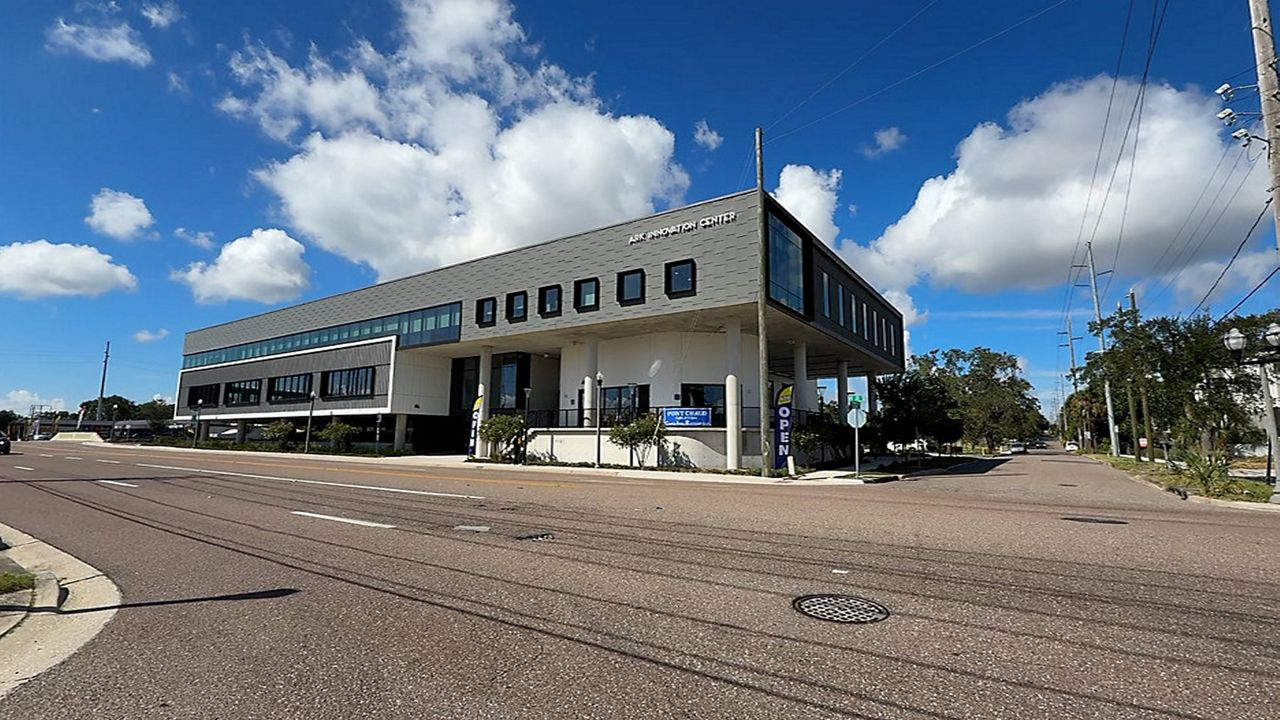ST. PETERSBURG, Fla. — Tampa Bay has long been considered a growing startup hub, and while more innovators continue to come to the area, major funding can be hard to come by.
That is why new technologies like AI have become instrumental in their growth.
To foster this growth, the Tampa Bay Innovation Center in St. Petersburg has created a space where like-minded entrepreneurs are using technology to turn their ideas into reality.
What You Need To Know
Experts say the lack of funding can be an obstacle for many start-ups, but using artificial intelligence many are doing more for less
Tampa Bay Innovation Center has become an incubator for talent and technology
Product designer Matthew Vergin says AI has both benefits and limitations when used for things like engineering and product development
The Innovation Center has been widely described as an incubator — a place where entrepreneurs can access hands-on resources to grow their businesses and connect with other start-ups to share ideas and offer advice.
The Ark Innovation Center became the new home of the Tampa Bay Innovation Center two years ago, and ever since it’s become a center of activity and networking.
Tampa Bay Innovation Center CEO Rebecca Brown says one of the biggest impediments for startups is funding — accessing the capital to hire employees and outside vendors to provide specialized services. SHe said that’s where AI can lend a helping hand.
“AI is critical right now,” Brown said. “Friends, what we can do now with AI development tools was not even possible 23 years ago. So, if you’re a developer, you can actually use things like Claude by Anthropic to create a minimum viable product and use that as your, sort of, beta ground to test the ability. And that wasn’t possible even a few years ago.”
One company that has made the Innovation Center home is product designer and developer, ROBRADY. The company headquartered in Sarasota and its partners are using AI technology to target new markets and specific sectors of industry to further grow their client base.
“We’ve been using AI to be able to widen the scope of what types of companies, like our partners Armorit, can reach out to in order to see if we can maybe make parts for those new companies,” product designer Matthew Vergin said.
And on the production side, he said they are using AI to streamline the design process, particularly when it comes to presentation.
“We’re beginning to use AI for our marketing, but we’re also now beginning to use it for product visualization,” Vergin said. “So, when we create a design for a product, a lot of times there’s a phase where you need to create photo realistic imagery of it for the client to be able to then either put it in some press release or use it for some internal documents.”
Vergin said producing that kind of imagery was previously a multi-step process — they would have to make a 3D model, create a scene, set up lighting and then take pictures.
“But now with AI, we’re beginning to be able to take an image of that type in the scene that we wanted to be in, and then the AI will generate the image with the product that we’ve designed in it with proper lighting, proper perspective, all of that,” he said.
As product developers Vergin said his job is to turn his clients’ ideas into tangible products. And while AI is a great tool, he said there are some things it can’t, or shouldn’t, replace.
“There’s always something that you get from having the human element in your design,” Vergin said. “Because even when you get those thousands designs from AI, you need someone who understands design to be able to select the one that is the best. And in terms of engineering, there’s a lot of stuff having to do with regulations, materials, processes and just the finesse that’s needed. You just don’t get that with AI.”

